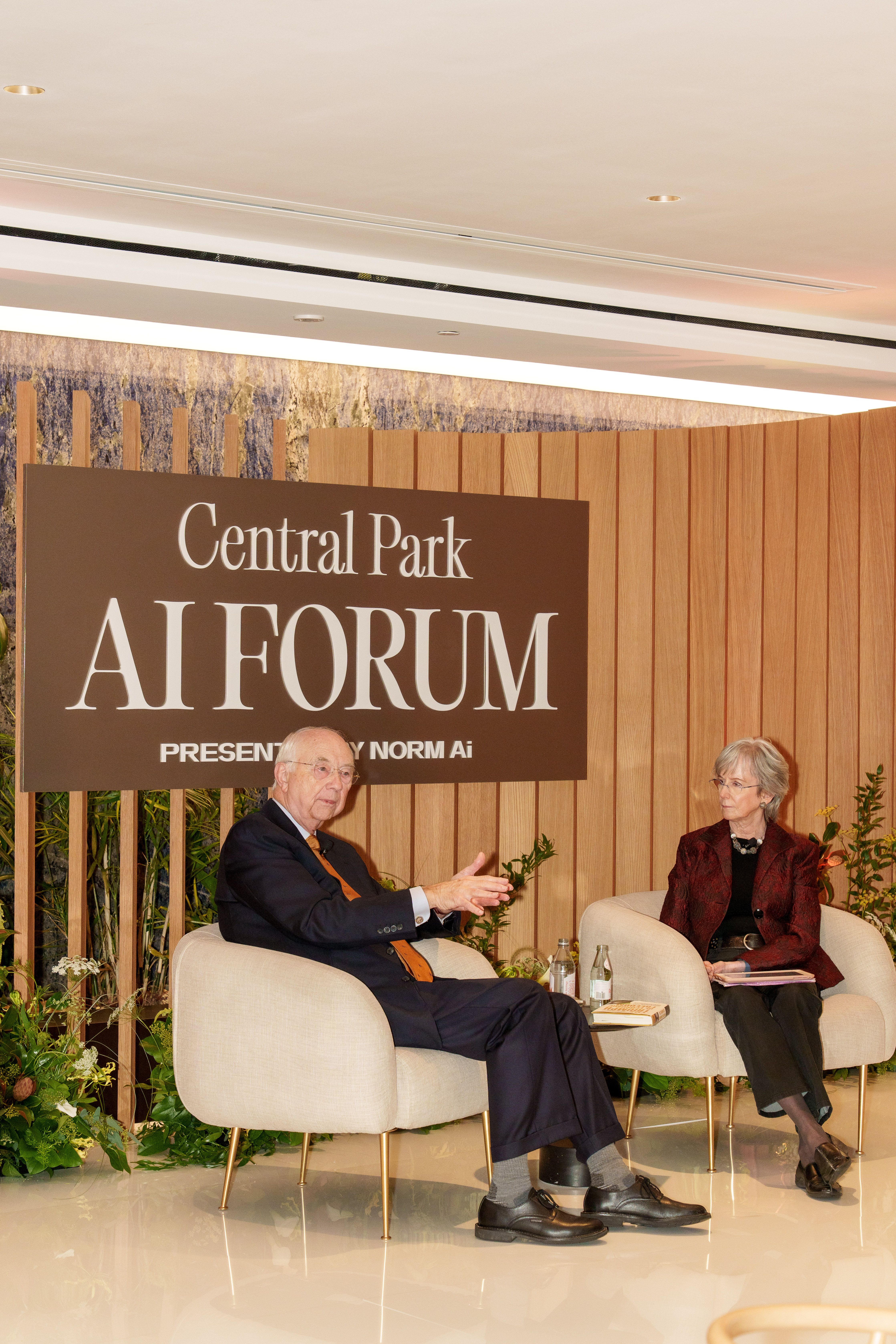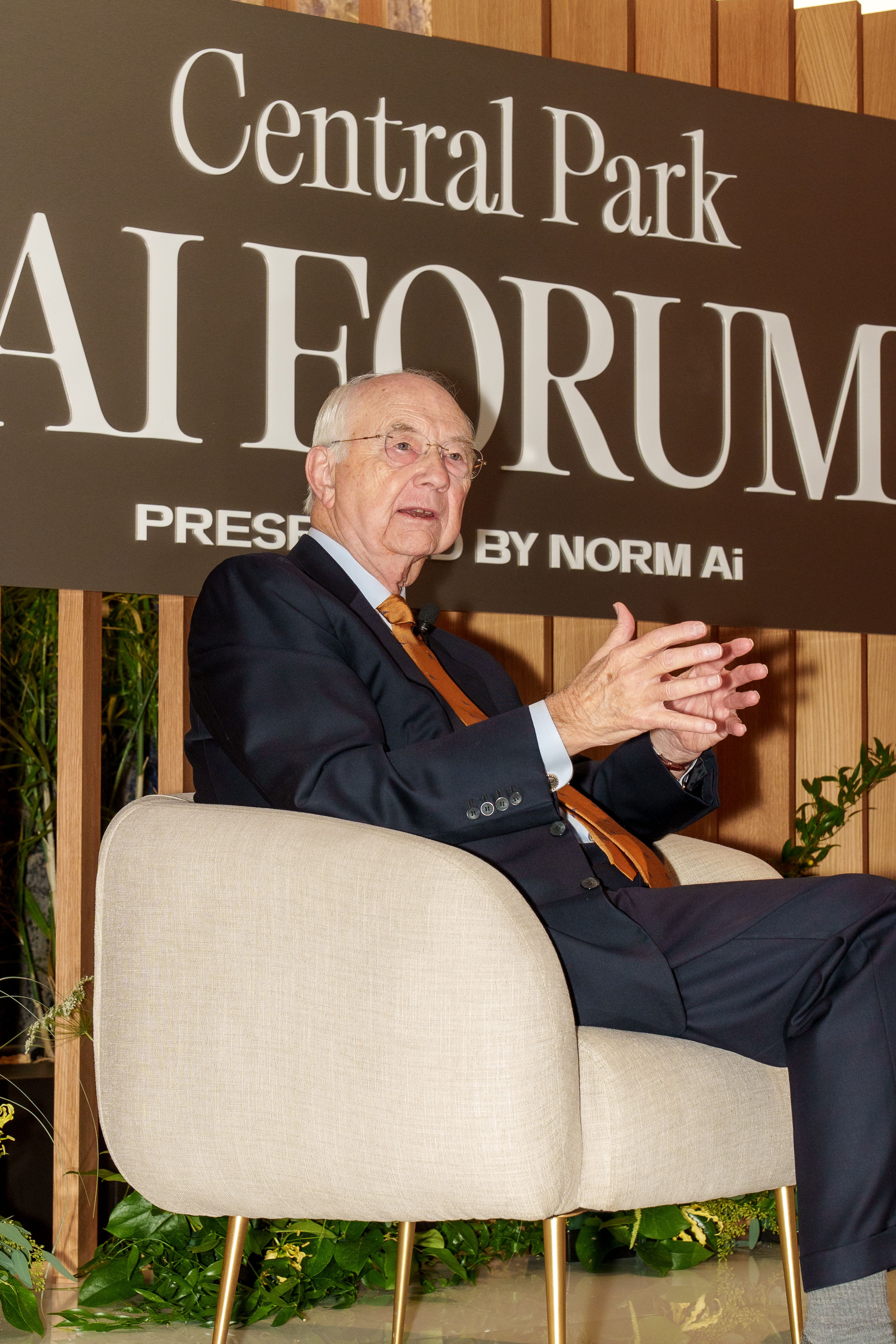Public Policy in the Age of AI: A Conversation from Central Park AI Forum
At Norm Ai’s Central Park AI Forum, Senator Phil Gramm, former U.S. Senate Banking Chair & Gramm-Leach-Bliley Act Author sat down with Susan Dudley, former White House Regulatory Czar & Norm Ai Regulatory Advisor to explore what history can teach us about public policy in the age of AI.* The conversation centered on historical optimism, market dynamism, and the approach to regulation without consumer harm.

AI’s impact will be considerable, but it’s not without historical precedent.
The narrative of AI often suggests that we’re in uncharted territory and that past experiences offer little guidance for policy based on AI’s revolutionary and transformative nature. Senator Gramm disagrees. “We don’t know anything except the past.” Gramm pointed to two historical periods that illuminate AI’s trajectory: the Industrial Revolution and the last 50 years of American economic dynamism.
The Industrial Revolution remains the most dramatic economic transformation in human history. It ended a thousand years of stagnation and ignited growth at extraordinary proportions. Between 1870 and 1900, GDP tripled in 30 years, the U.S. population doubled, and real wages rose 160%. Most striking: this explosion of prosperity happened while 20 million people came to America seeking opportunity. “The Industrial Revolution, the most dramatic change in human history, did not destroy jobs. It created them at a rapid rate and introduced a period of prosperity and growth that has never ended,” Gramm said. “And I think that’s encouraging in looking at the future.”
The second instructive period is the last 50 years. Gramm highlighted a statistic that captures American labor market flexibility; every month, 5 million people either quit or are fired. Fortunately, 5.4 million people take new jobs. This flexibility powers an economy designed to absorb rapid technological shifts and sustained growth. During the last half-century of constant innovation, the economy has absorbed transformative advancements like the personal computer, the internet, and the smartphone - all while employment continues to grow.
Predicting the political backlash of creative destruction
History also warns of what’s coming. While the Industrial Revolution unleashed a wave of creative innovation that has built the modern world, its destructive effects are impossible to dismiss and instead fueled strong political backlash we still reckon with today.
Senator Gramm noted that even today, hundreds of years later, textbooks present the Industrial Revolution through a lens colored by backlash to its disruptions. While we learn that inventions including the steam engine and railroad allowed for faster, cheaper, and more efficient manufacturing, lessons dwell on the ways that these technologies dramatically reshaped urban communities, disrupted labor markets, and rendered entire industries obsolete.
Political reactions have always followed the economic dislocation caused by creative destruction. The concentrated, immediate pain of transition often overshadows its long-term benefits and gives rise to movements that aim not to manage change but resist it. “There’s a lesson there,” Gramm warned, “that we are about to see a real wave of negative debate, a public opinion movement, and a potential political movement in response to AI.”
The political dimension has a substantial impact because policy response is often shaped by emotion as much as economics. When governments attempt to prevent the destructive repercussions of innovation, they often, unintentionally, stunt the creative part as well.

AI monopolies and the return of “big is bad” thinking
Beyond employment concerns are those about AI monopolies and antitrust. Gramm and Dudley offer that these concerns about AI concentration echo antitrust debates over the last century. During this time period, antitrust enforcement has followed two philosophies - each producing dramatically different results.
The first approach: big is bad. America tried this for 70 years and it completely failed.
The second approach emerged when Jimmy Carter and Ted Kennedy led deregulation efforts in the late 1970s. Their principle: if size results from efficiency and innovation, let the market work. But if size creates monopolistic behavior that limits production and drives up prices, then regulate.
“We now dominate the world in the areas they deregulated,” Gramm said. This principle applies directly to AI. If dominant firms emerge through better technology and efficiency, intervention may destroy the very innovation that created value. If those firms abuse market power to harm customers, that’s when antitrust action makes sense.
Gramm warned that recent administrations have reverted to “big is bad” thinking, viewing it as a real threat as the country navigates AI’s technological landscape.
Applying our oldest value to our newest technologies
Throughout the conversation, Gramm and Dudley returned to the guiding principle, “first, do no harm.” That principle recognizes a fundamental truth about American economic performance and policy. The country has experienced rapid growth, higher incomes, and greater efficiency in part because it allows creative destruction to run its course. When obsolete industries fade and workers move into higher-value areas, the economy grows.
What Gramm and Dudley made clear is that the impulse to protect against disruption is understandable. The political pressure will be intense. But the historical record suggests that the best policy response is often the hardest one: remove barriers, let markets adjust, and resist the urge to prevent the very disruption that creates long-term prosperity.
*The views and opinions expressed during this session are those of the individual speakers and do not necessarily reflect the views, positions, or policies of Norm Ai.
See Legal & Compliance AI in action
We’ll reach out to schedule a personalized demo.
Central Park AI Forum
Download the Central Park AI Forum pre-read anthology today.